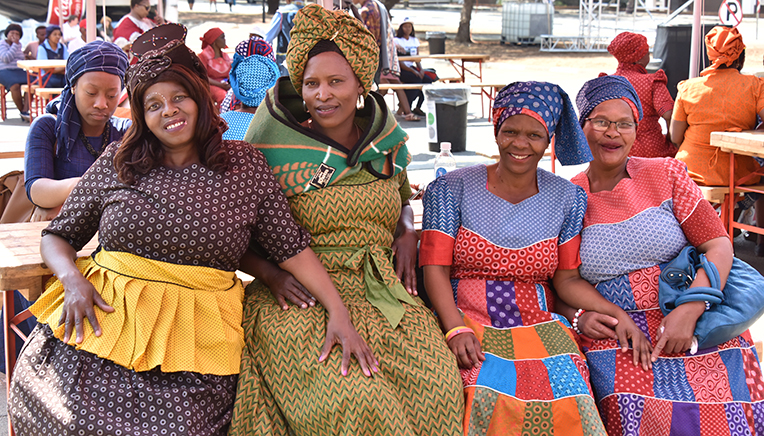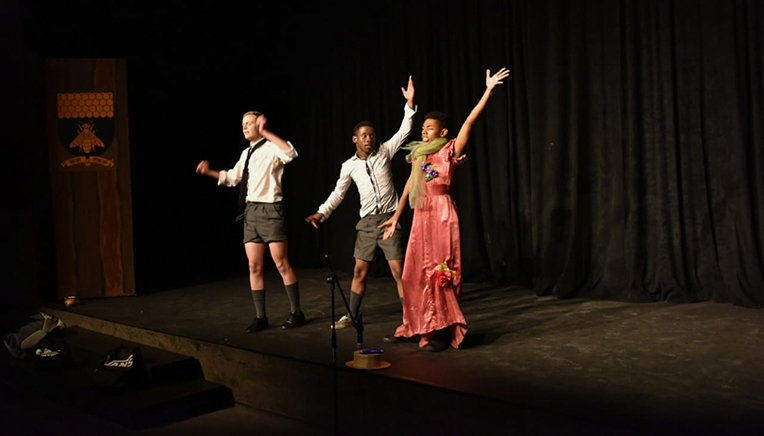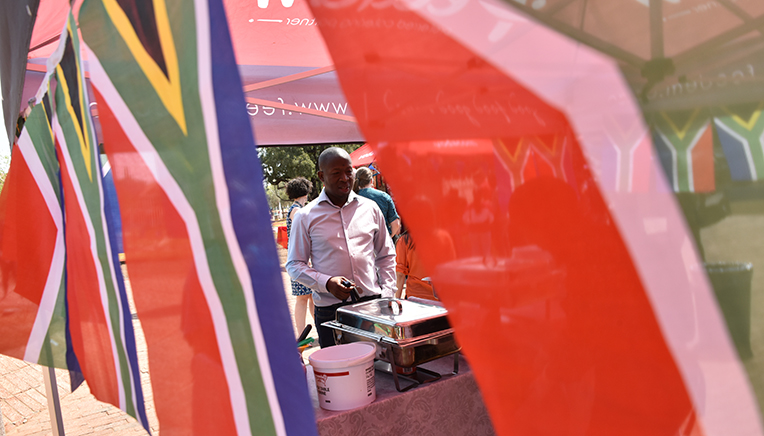The first
Kovsies Multilingual Mokete was a celebration of language and culture; it is a commitment by the University of the Free State (UFS) to nurture an attitude of inclusiveness and acceptance on all three of its campuses. Hosted on the Bloemfontein Campus on Wednesday 18 September 2019, the mokete was a hype of activity with drama, poetry, music, dance, and scrumptious cultural cuisine.
“This initiative was coordinated to promote and celebrate all our regional languages, but also important – our regional cultures.” This was the words of
Prof Francis Petersen, Rector and Vice-Chancellor of the UFS, on opening the first Kovsies Multilingual Mokete.
The Mokete stage came alive with the impeccable voices of our students and staff as they personified multilingualism through the spoken word in the form of poems, the drama production, Dogg’s Hamlet in the Scaena, praise songs, and dance. A mural featuring individual artworks was also on display during the mokete, as well as a screening of the movie, The Visitor.
The Mokete was concluded by
Simple Stories, a band of former Kovsie students, with
Early B as the main act. The People’s Choice Award winner of the day was Soetbravado, winners of the UFS SingOff competition.
“I think the inaugural Multilanguage festival is full of potential. Tolerance and understanding of different cultures are what I see here. I think it’s amazing and I would recommend the UFS to continue with it,” says Jon-Dylon Petersen, former SRC member and final-year Quantity Surveying and Construction Management student.
 The traditional outfits made for a colourful Mokete. Photo:Charl Devenish
The traditional outfits made for a colourful Mokete. Photo:Charl Devenish
Mokete part of UFS project to foster sense of belongingThe mokete is furthermore presented in support of the
Integrated Transformation Plan (ITP) work streams on Teaching and Learning, Student and Staff Experience, and the Multi-Campus Model. “As a university, we are proud of the many languages and cultures which form part of this university. It creates a level of diversity and it is through diversity that we can build strength within the university,” says Prof Petersen.
This initiative of multilingualism is part of the university’s language policy, which promotes a sense of belonging and acceptance among people. “We want to create opportunities and platforms and campuses where everyone should feel welcome, and to create the ability for each culture and language group to also learn from one another.”
The ultimate goal is to use the multilingual initiatives to prepare our students for the multilingual and multicultural world, but also to stay connected to our own heritage and background.
 The play Dogg's Hamlet was showcased in the Scaena Theatre during the Mokete. Photo: Charl Devenish
The play Dogg's Hamlet was showcased in the Scaena Theatre during the Mokete. Photo: Charl Devenish
Mokete should become an annual event The reaction to the mokete was overwhelmingly positive and it was well received in the Kovsie community. “It’s a beautiful experience to see how academics can come to a university and showcase not only different languages, but different cultures; it’s something which should continue in the spirit of ubuntu and diversity, and can maybe become a national festival,” says Almondreaux Williams, third-year LLB student.
Not only was the mokete a celebration of multilingualism at the UFS; it was also a platform to express different cultures in the form of traditional attire.
''It’s getting people together. All of us, all the cultural groups are here together. The performances were awesome,” says Sibongile Witbooi, a third-year Geology student and Residence Committee member for Culture at Akasia residence.
 Authentic South African cuisine was on the menu for the day. Moketers could enjoy array of flavours from bobotie and rice to
Authentic South African cuisine was on the menu for the day. Moketers could enjoy array of flavours from bobotie and rice to
chesanyama and pap. Photo: Charl Devenish